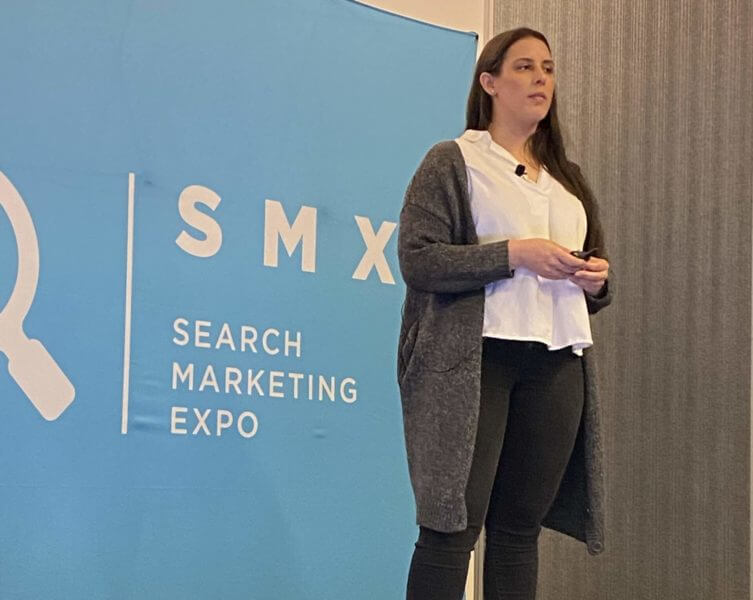The early days — just a few years ago — of cheap clicks, little competition and a buggy interface with little reporting are gone. Amazon advertising formats and inventory have evolved dramatically, and marketers and Amazon sellers are flocking to the platform. More competition means advertisers need to be savvier to ensure they’re ad campaigns are profitable.
Calculating your COGS (cost of goods sold) and all seller fees is key to running profitable search ad campaigns on Amazon, says Kaitlin McGrew, senior SEM manager at Fort Worth-based PMG Digital Agency.
In addition to the monthly Amazon seller subscription fee and per-item closing and referral fees, you may also incur sales tax service fees as well as various storage and inventory fees if you’re using Amazon’s FBA fulfillment program, McGrew said in a talk on “Driving Profitable Sales with Amazon Search Ads” at our SMX West conference last month.
Calculate ASIN-level profit margins
“Understanding hidden fees and ASIN profitability will help navigate your strategy,” said McGrew.
Get the Periodic Table of Digital Commerce Marketing
To caculate profit margin: ((Revenue – (COGS + Fees) / Revenue)) * 100.
In the example report below, McGrew shows you how to see the profit margin of each product, or ASIN (the Amazon Standard Identification Number assigned to each product), after accounting for COGS, storage fees and advertising costs.
Market to the full funnel on Amazon
You don’t need to limit your marketing and advertising on Amazon to reaching bottom-of-the-funnel shoppers who are ready to buy. You can run campaigns to reach consumers in discovery mode as well. The key is to set goals and track metrics for each stage of the funnel, McGrew emphasized.
“Make sure that you are utilizing brand, nonbrand and product targeting,” she said. “Have every campaign type enable to ensure you’re hitting users in any possible way on Amazon.” McGrew breaks it down this way:
Upper funnel: Amazon Posts (organic/free) and Video in Search ads (in beta). Metrics: impressions, clicks, click-through rate (CTR).
Mid funnel: Sponsored Brand and Sponsored Products ads with non-brand keyword and product targeting. Metrics: impressions, clicks, CTR, new-to-brand revenue, ACoS (advertising cost of sale).
Low funnel: Sponsored Brand and Sponsored Products ads targeting brand keywords, ASIN retargeting with Sponsored Display ads (in beta) to reach users on and off Amazon. Metrics: ACoS, ROI (return on investment).
Organize campaigns for control, profitability
A well-structured account with consistent conventions and organization taxonomies will help you keep your campaigns profitable. In the example below, McGrew explained the clear naming structure by brand, nonbrand, specialty and ASIN-specific campaigns.
Looking at the “Specialty” column below, there is an “InventoryRisk” campaign to promote a set of products that have been in Amazon storage for more than 90 days. “I really need to move this product because we’re spending too much money keeping it on the shelf. Put those in a campaign and label ‘InventoryRisk’ so you can quickly identify [it],” McGrew explained.
When you have a well-organized account, it becomes easier to manage bidding for profitability.
Dynamic bidding. McGrew said she has had good success with Amazon’s machine learning-powered dynamic bidding that adjusts bids automatically based on the likelihood of conversion. Dynamic bidding on Amazon has three options: Down, Up & down and Fixed.
Placement bidding. Placement bid adjustments can be used to increase top of page and/or product page bids by up to 900%. Download the Placement report to see where your campaigns are showing and how they’re performing in each placement. You can then calculate profit margins based on ad position and evaluate your placement bid strategies.
Consider seasonality and search trends. “This goes beyond, say bidding up on sandal keywords in the summer,” Mcgrew noted. “We do see people search on Amazon for ‘gifts for him,’ [for example], so make sure that you’re constantly looking at what is going on throughout the year and incorporating that into your planning.”
Achieve ASIN-readiness
Selling, much less advertising, on Amazon won’t be profitable if your ASINs, or products, aren’t “retail ready.”
This includes everything from product detail page optimization with clear titles, multiple product images, complete product information to good ratings and reviews to having sufficient inventory on hand. (Do not include low inventory products in your campaigns, McGrew cautioned.)
Product details, pricing, reviews, images, customer feedback, shipping speed, response rates, inventory levels and advertising all contribute to the “flywheel effect” for greater visibility and profitable sales on Amazon.

